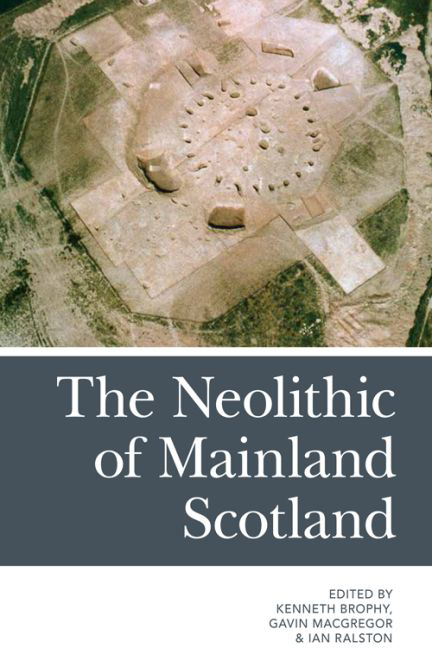Book contents
- Frontmatter
- Contents
- List of Tables and Figures
- Notes on the Contributors
- Acknowledgements
- Foreword: ‘The prehistory of my own lands, the lowlands’
- Part I Scotland's Mainland Neolithic in Context
- 1 Gordon Barclay: A Career in the Scottish Neolithic
- 2 Neolithic Pasts, Neolithic Futures: The Contemporary Sociopolitics of Prehistoric Landscapes
- 3 ‘Very real shared traditions’? Thinking about Similarity and Difference in the Construction and Use of Clyde Cairns in the Western Scottish Neolithic
- 4 Who Were These People? A Sideways View and a Non-answer of Political Proportions
- 5 Pathways to Ancestral Worlds: Mortuary Practice in the Irish Neolithic
- Part II Non-megalithic Monuments
- Part III Pits, Pots and Practice
- Index
3 - ‘Very real shared traditions’? Thinking about Similarity and Difference in the Construction and Use of Clyde Cairns in the Western Scottish Neolithic
from Part I - Scotland's Mainland Neolithic in Context
Published online by Cambridge University Press: 15 September 2017
- Frontmatter
- Contents
- List of Tables and Figures
- Notes on the Contributors
- Acknowledgements
- Foreword: ‘The prehistory of my own lands, the lowlands’
- Part I Scotland's Mainland Neolithic in Context
- 1 Gordon Barclay: A Career in the Scottish Neolithic
- 2 Neolithic Pasts, Neolithic Futures: The Contemporary Sociopolitics of Prehistoric Landscapes
- 3 ‘Very real shared traditions’? Thinking about Similarity and Difference in the Construction and Use of Clyde Cairns in the Western Scottish Neolithic
- 4 Who Were These People? A Sideways View and a Non-answer of Political Proportions
- 5 Pathways to Ancestral Worlds: Mortuary Practice in the Irish Neolithic
- Part II Non-megalithic Monuments
- Part III Pits, Pots and Practice
- Index
Summary
Introduction
In 2009, Gordon Barclay wrote ‘We must be careful not to replace “national” prehistories with micro-regional approaches that underplay the very real shared traditions, and complex relationships between regions …’ (Barclay 2009: 3; added emphasis). My chapter takes this idea as its starting point: how do we, as archaeologists interested in both regional differences and contextual archaeologies, understand similarity and difference in our evidence? Since most contemporary archaeologists have moved away from a culture– historical narrative, with its emphasis on broad-scale comparative work, I suggest that we do not have a problem understanding difference, but that archaeologists are currently struggling with how to deal with similarities in the archaeological record. Therefore, I shall explore traditions of monumentality and investigate how archaeologists might deal with similarities across broad areas, while still writing regional and contextually specific archaeologies. The Clyde cairns of western Scotland are used as a case study through which to explore these issues.
Introducing western Scotland
Western Scotland from the Solway Firth north to the southern Hebrides is a diverse area, incorporating both lowland and upland zones with a mosaic of agricultural land, peaty moorland and, further north, mountains. One of the key characteristics of its western seaboard is the presence of a range of islands, including those in the Clyde estuary and others, such as Islay and Jura, on the Atlantic façade. While this volume is focused on mainland Scotland, to only consider that land mass in the west would be meaningless: the maritime nature of this part of Scotland is one of its defining characteristics. It seems highly likely that the seaways that traverse this area were key routes in the Neolithic (Garrow and Sturt 2011), connecting communities living along its coasts from the Solway Firth to Jura (Cummings 2009). Indeed, the Clyde estuary and adjacent lands were originally considered one of the key areas for Neolithic colonisation (e.g., Piggott 1954; Sheridan 2010 offers the latest version of this argument). Therefore in this chapter attention will be paid to both the islands and the mainland of western Scotland.
In terms of Early Neolithic archaeology, narratives on western Scotland have been dominated by discussions of chambered cairns in the Clyde tradition of monument construction (Scott 1969, 1973; Henshall 1972; Noble 2005; Cummings 2009), although other monumental traditions present extend to timber-and-earthwork types (Thomas 2007; forthcoming).
- Type
- Chapter
- Information
- The Neolithic of Mainland Scotland , pp. 41 - 56Publisher: Edinburgh University PressPrint publication year: 2016



